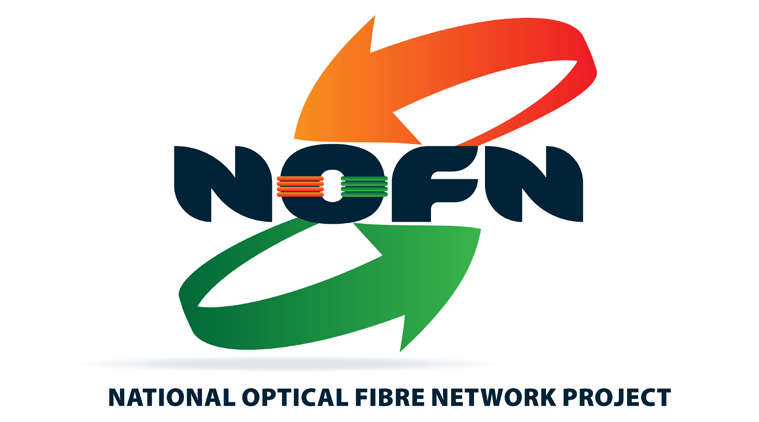India optical fiber cables (OFC) market is expected to grow robustly due to expansion of telecom infrastructure throughout the country over the next five years. Being the second largest telecom market worldwide, India exhibits high data traffic owing to increasing penetration of smartphones and growing demand for broadband services, thereby creating significant demand for OFC installations. Consumers are increasingly shifting towards internet driven applications like HDTV, video on demand and high-speed file sharing. To address the soaring demand for high speed data transmission, the government of India along with telecom giants is investing substantial capital in upgrading the country’s telecom infrastructure. The existing network of copper cables is being over hauled by using advanced fiber optic technology. All these factors are consequently providing a considerable thrust to the OFC market in India.
The wireless network challenges that India is facing
Government across Asia are encouraging investment in high capacity networks.They see fiber as the infrastructure of the 21st century.In recent globel survey,71 percent of respondents expect to transition the majority of their networks of FTTH by 2025.Thus the government is encouraging investment in high-capacity networks and accelarate public access to wi-fi for the region.
Spectrum is scarce and there is limited ammountof frequency allocation.There is an urgent need to free up more spectrum for 3G and 2G.
For developing counteries in Asia, such as India,with their rapidly increasing data traffic,it will be critical to continue to invest in broadband infrastructure in order to be economically competitive.Fiber optics will play a critical role in realizing the dream of Digital India.
The role of fiber optics in helping to realize a Digital India
Under the Digital India initiative,the Indian government aiming to supply internet access throughtout the whole country, connecting600,000 rural citizens to bridge the digital gap between cities and villages through fiber optics network.
According to the former President of India APJ Abdul Kalam, 400 million fiber km infrastructure is required in order to realize a Digital India. As a result,it’s obvious that fiber optics play a critical role in realizing the dream of Digita India.
Growth in digital economy needs background infrastructure.Fiber cabling directlyto the outdoor antennas, and combining these cables with power to the growing numbers of small cells will be key to making this happen.
The government will have to work with the Telecoms Industry to leverage existing fiber-to-the-home(FTTH) constructions and to add in extra 5G connection points along the way.
India Optical Fiber Cables Market Forecast and Opportunities, 2020
According to “India Optical Fiber Cables Market Forecast & Opportunities, 2020”, the optical fiber cables market in India is expected to surpass US$ 424 million by 2020. Nationwide connectivity projects launched by the government such as National Optical Fiber Network (NOFN) and National Fiber Spectrum (NFS), and the anticipated 4G Rollout in the country are bound to boost data transmission volumes, thereby making expansion of OFC installations critical for supporting the planned network expansions. In addition, next generation technologies such as LTE and FTTx, which require last mile connectivity, would also propel the demand for optical fiber cables in the coming years. “India Optical Fiber Cables Market Forecast & Opportunities, 2020” discusses the following aspects of OFC market in India:
- India Optical Fiber Cables Market Size, Share & Forecast.
- Segmental Analysis – By Application Industry, By Company, By Region.
- Trade Dynamics – Import and Export Scenario.
- Changing Market Trends & Emerging Opportunities.
- Competitive Landscape & Strategic Recommendations.
National Optical Fibre Network Rollout:
the National Optical Fibre Network (NOFN), a vital component of the NDA government’s Digital India push that aims at plugging the rural connectivity gap, the Centre has given in to the demands made by a section of states to implement their part of the scheme on their own.
An active role for states is being seen by the Centre as a bid to expedite project execution and tide over right-of-way hurdles, as states such as Andhra Pradesh, Tamil Nadu and Gujarat are among those seeking their participation to be conditional to them getting the mandate to take up their leg of the project on their own.
“On the BharatNet project for connecting 2,50,000 gram panchayats (GPs), states have come on board. Some like Tamil Nadu want to go with their own model, which is fine…,” Minister for Communications and Information Technology Ravi Shankar Prasad told The Indian Express. According to government officials involved in the exercise, the NOFN project — envisaged as a Centre-State joint effort where states were expected to contribute by way of waiving off the right-of-way charges — is running behind schedule. An internal assessment by the Department of Telecommunications (DoT) suggests that it is unlikely to be completed by its deadline of December 2016. While in 2014-15, plans were afoot to execute work for 1 lakh GPs, which was later scaled down to 50,000 GPs, data up to March 2015 showed that only about 20,000 GPs had been covered under the NOFN — just about 40 per cent of the planned target. As on December 6, 2015, optical fibre cable laying in 32,272 GPs had been completed and 76,624 kilometer fibre laid, according to latest government data.
The NOFN project, officials said, is now being monitored on a weekly basis and a progress report is being sent to the DoT and other stakeholders every Monday. Prasad said that his ministry is in the process of finalising the implementation details, including the DPR (detailed project report) norms. “Then we have SPV (special purpose vehicle) model where the states and Centre are working together. 18 states have come on board and am a little overboarded now… It is a very transformational programme, we took about 30 years to lay down 10 lakh kilometre of optical fibre. With 3-year plus, we are going to lay down 7 lakh kilometres,” he said. With respect to the funding requirements, as against an indicative cost of about Rs 20,100 crore for the NOFN project, an amount of Rs 3,054.43 crore has been released till October 31, 2015, by the Universal Service Obligation Fund to Bharat Broadband Network Ltd (BBNL), a special purpose vehicle created under the Companies Act of 1956 for execution of the NOFN project.
Credit – techsciresearch
Credit – telecomlead
Credit – indianexpress



